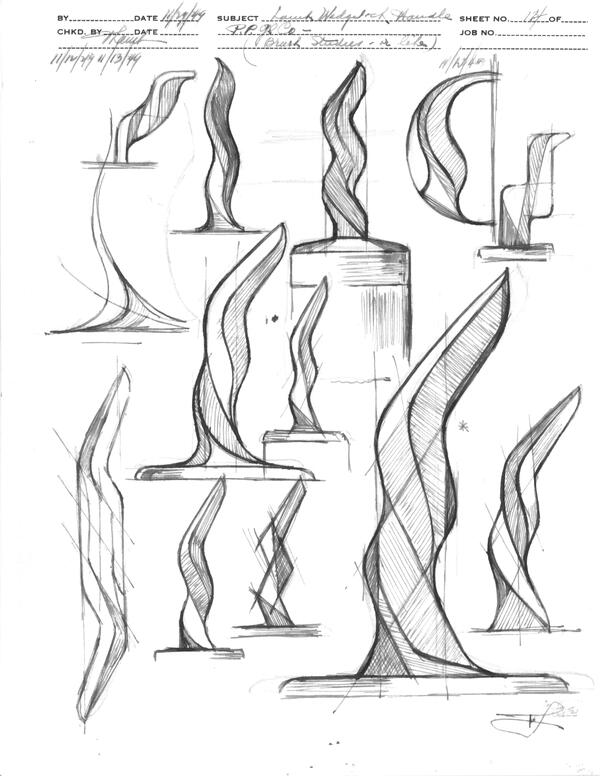
These industrial design drawings were created on November 29, 1949 by Thomas Lamb (1896-1988), the "Handle Man", an industrial designer most noted for his creations of physiologically efficient handles like the ones depicted here. Lamb's start in the field was inauspicious; he dropped out of high school to help financially support his family, but took up a job doing medical drawings for a plastic surgeon, where he learned anatomy.
Many years later, this training would inform his contributions as a pioneer in the early Universal Design movement, an approach to design whose principles prioritize accessibility for people regardless of age and ability in product and environment creation. On an industry-wide scale, the origin of these concepts can be traced to the rehabilitation engineering and assistive technologies that were developed during and after World War II to meet the needs of veterans with disabilities.
In the early stages of his career, however, Lamb produced a wide variety of consumer goods. His work as an illustrator for children’s books in the 1920s led to his "Kiddyland" cartoon series, which ran in Good Housekeeping magazine and provided the basis for a line of children’s toys, as well as a variety of related products, advertising initiatives, and other marketable tie-ins.
Hagley Library's Thomas Lamb papers (Accession 2181) collection contains drawings, sketches, and artifacts pertaining to Lamb's career, which trace the development of his unique handle design, as well as his pursuits in the fields of textiles, cartoons, and writing, particularly for children. You can view a selection of digitized materials from the collection online now by clicking here. To view a digital exhibit about Universal Design resources at Hagley Library, click here.

